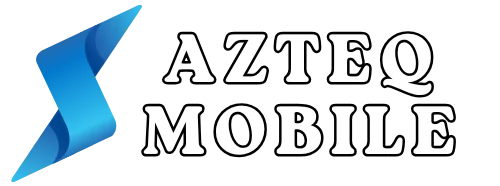Imagine a classroom where students navigate their learning journeys with the ease and excitement of a video game. Welcome to the world of edtech resources. As technology revolutionizes education, it’s essential to explore what these tools can offer. From interactive apps to comprehensive learning platforms, this article breaks down the myriad of edtech resources available and how they can transform traditional teaching methods. Let’s immerse and discover how these digital gems can make learning not just effective, but downright enjoyable.
Table of Contents
ToggleUnderstanding Edtech Resources

Edtech resources refer to any technology that helps help learning and enhance the educational experience. They can take numerous forms, including software, apps, platforms, educational games, and anything else that could optimize how information is delivered and consumed in an educational context. It’s essential to understand that these resources are not merely gadgets: they are tools designed to support educators and learners alike.
In a landscape constantly evolving with technology, edtech resources create opportunities for personalized learning, enabling students to progress at their own pace. Whether it’s a kindergarten classroom or a professional development course, these tools cater to a range of educational needs.
Also, the introduction of edtech resources has sparked a pivotal shift in the pedagogical approach. Traditional methods often limited students to rote memorization and passive learning experiences. In contrast, edtech promotes collaboration, critical thinking, and creativity, making education a more interactive and engaging try.
Types of Edtech Resources
There are various edtech resources available today, each tailored to specific learning needs. The following types are especially prominent:
- Learning Management Systems (LMS): Platforms like Moodle and Canvas enable educators to create, manage, and deliver online courses. These systems offer resources, assessments, and forums for student engagement.
- Digital Content Libraries: Services such as Khan Academy and Coursera provide extensive libraries of video lectures, exercises, and quizzes across numerous subjects.
- Interactive Tools: Apps like Kahoot. and Nearpod allow teachers to create engaging, gamified learning experiences that motivate students.
- Assessment Tools: Tools such as Quizlet and Formative help educators gauge student understanding through quizzes and assignments that can be easily graded.
- Collaboration Tools: Platforms like Google Classroom and Microsoft Teams help communication among students and teachers, creating an environment of teamwork and shared learning.
Key Benefits of Using Edtech Resources
Integrating edtech resources into the classroom comes with numerous advantages.
- Personalized Learning: Students can learn at their pace, revisiting complex concepts or advancing through lessons that match their skill level.
- Enhanced Engagement: Interactive tools captivate learners’ attention better than traditional textbooks. The incorporation of video, quizzes, and games makes the learning process more enjoyable.
- Data-Driven Insights: Educators gain access to valuable analytics about student performance, allowing them to make informed decisions about instructional methods and interventions.
- Accessibility and Inclusion: Edtech resources can bridge gaps for students with diverse learning needs by providing tailored support. This is crucial in creating inclusive classrooms where everyone has the opportunity to succeed.
Popular Edtech Tools and Platforms
Several edtech resources have gained popularity due to their effectiveness and ease of use. Here are a few noteworthy tools that have made substantial impacts in classrooms:
- Google Classroom: This platform streamlines communication, assignment distribution, and grading, making it a favorite among educators.
- Kahoot.: Kahoot. allows teachers to create exciting quizzes where students compete in real time.
- Nearpod: This tool enhances lessons with immersive content, including virtual field trips and interactive assessments.
- Edmodo: Connecting educators, students, and parents, Edmodo offers a social network feel to classroom learning.
- Flipgrid: Students use video responses to express their ideas and reflect on their learning, which fosters collaboration and community.
How to Choose the Right Edtech Resources
Selecting appropriate edtech resources is crucial for maximizing their impact. Here’s how to make informed decisions:
- Assess Learning Objectives: Understand what you want to achieve. Are you aiming to support group projects, enhance assessments, or foster creativity?
- Consider User Experience: Tools should be intuitive and easy to navigate for both educators and students. Complicated tools may hinder, rather than help.
- Seek Feedback: Before adopting new resources, gather input from colleagues, students, or educational leaders who have tried them.
- Evaluate Cost versus Benefits: Some resources require subscriptions. Assess whether the outcomes justify the costs.
Best Practices for Implementing Edtech in Classrooms
Implementing edtech resources effectively can significantly enhance learning experiences. Here are some best practices to consider:
- Professional Development: Ensure educators receive training on new tools to maximize their benefits. A well-informed teacher can leverage resources strategically.
- Integrate Gradually: Don’t overwhelm students with too many tools at once. Introduce one or two at a time, allowing time for adjustment and mastery.
- Encourage Collaboration: Foster an environment where students feel comfortable working together and sharing their insights, using edtech as a facilitator for group learning.
- Monitor and Reflect: Regularly assess how edtech resources are impacting student learning. Reflection helps identify what works well and what needs adjustments.
Future Trends in Edtech Resources
The world of edtech is constantly evolving. Here are some trends likely to shape the future landscape:
- Artificial Intelligence: AI is poised to personalize learning even further, adapting content to meet individual student needs in real-time.
- Gamification: The use of game design principles in education is expected to rise, making learning more engaging and competitive.
- Virtual and Augmented Reality: These technologies offer immersive learning experiences, allowing students to explore concepts in three dimensions.
- Integration with Blockchain: Blockchain could provide secure and transparent ways to verify achievements and assessments, ensuring credibility in educational records.



